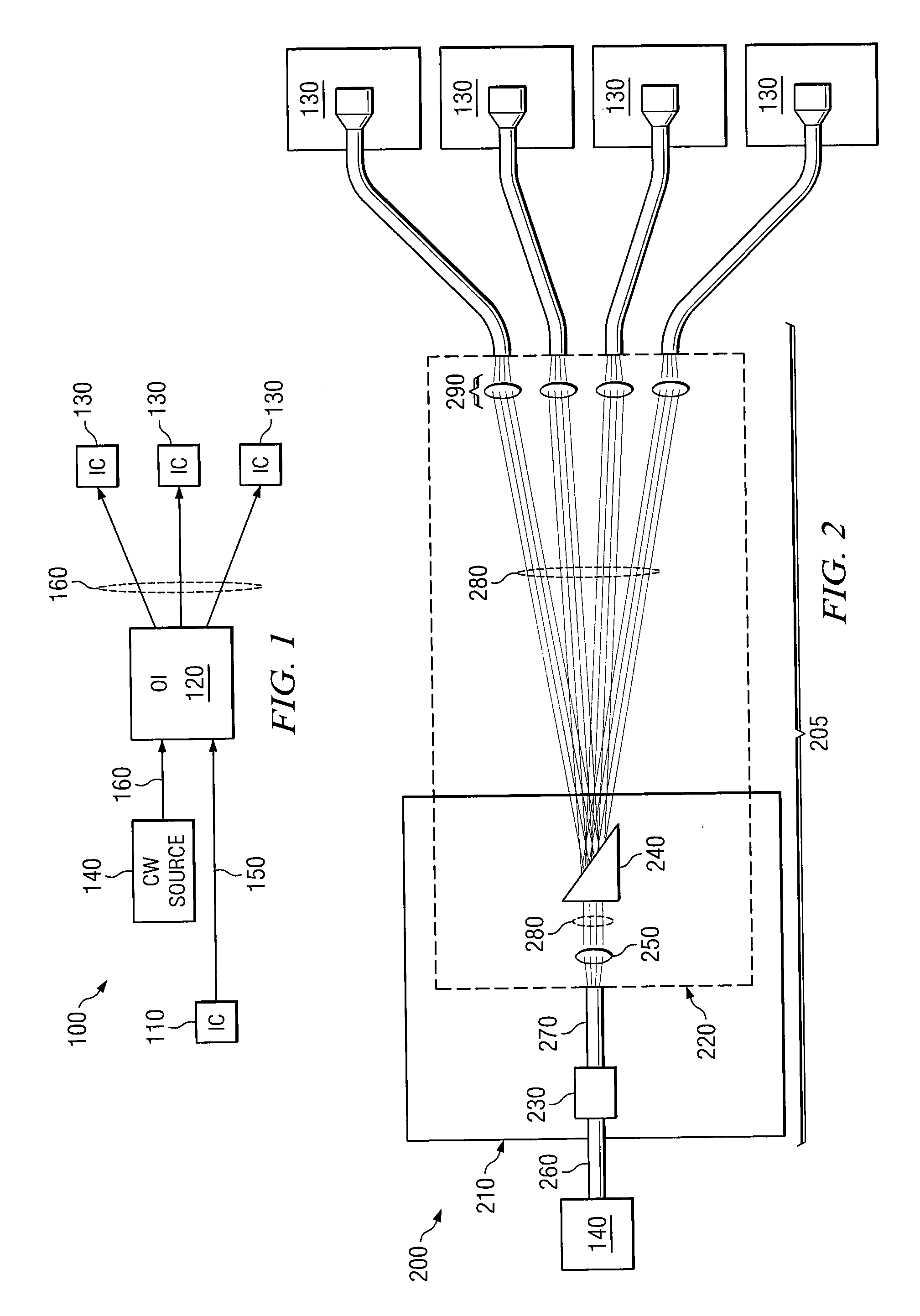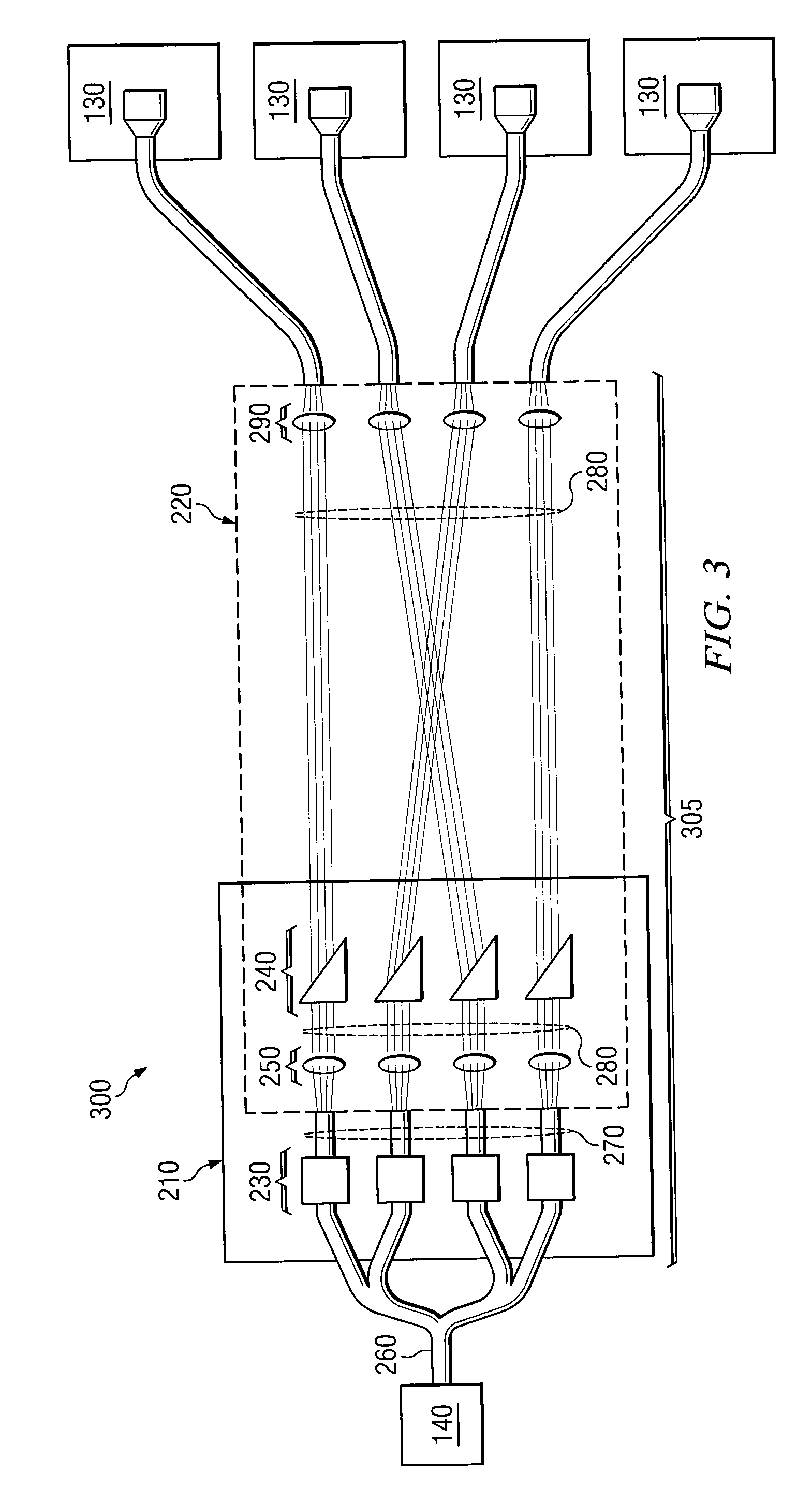Dynamic Reconfigurable Optical Interconnect System
a dynamic reconfigurable, optical interconnect technology, applied in the field of optics, can solve the problems of inflexible architecture for optical routing and chip-to-chip communication, and achieve the effect of reducing or eliminating at least some of the disadvantages and problems
- Summary
- Abstract
- Description
- Claims
- Application Information
AI Technical Summary
Benefits of technology
Problems solved by technology
Method used
Image
Examples
Embodiment Construction
[0013]FIG. 1 depicts an optical circuit 100 where a particular embodiment may be utilized. Optical circuit 100 includes a data source 110, an optical interconnect 120, one or more receiving devices 130, and a continuous wave (“CW”) light source 140. Data source 110 is coupled to optical interconnect 120 via an electrical data link 150. CW light source 140 is coupled to optical interconnect 120 via an optical link 160. Optical interconnect 120 is also coupled to receiving devices 130 via optical links 160. Optical links 160 include, but are not limited to, optical waveguides, such as rectangular waveguides, slab waveguides, optical fibers, and the like. Data source 110 and receiving devices 130 may be integrated circuits (“IC”), or any other suitable device that transmits and / or receives data.
[0014]In operation, data source 110 outputs data to optical interconnect 120 via electrical data link 150. Optical interconnect 120 receives this data, along with a CW light beam from CW light s...
PUM
| Property | Measurement | Unit |
|---|---|---|
| input voltage | aaaaa | aaaaa |
| refractive index | aaaaa | aaaaa |
| wavelength | aaaaa | aaaaa |
Abstract
Description
Claims
Application Information
 Login to View More
Login to View More - R&D
- Intellectual Property
- Life Sciences
- Materials
- Tech Scout
- Unparalleled Data Quality
- Higher Quality Content
- 60% Fewer Hallucinations
Browse by: Latest US Patents, China's latest patents, Technical Efficacy Thesaurus, Application Domain, Technology Topic, Popular Technical Reports.
© 2025 PatSnap. All rights reserved.Legal|Privacy policy|Modern Slavery Act Transparency Statement|Sitemap|About US| Contact US: help@patsnap.com



